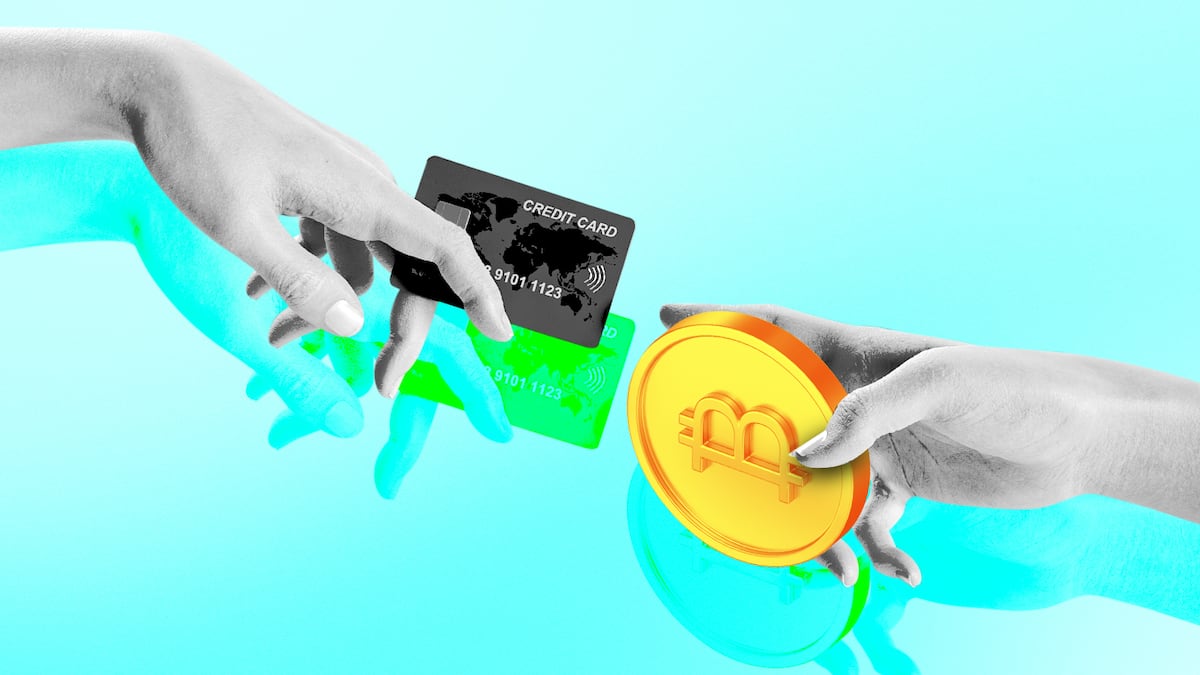- More and more firms are launching crypto neobanks.
- They want to tap blockchains and DeFi to offer customers fast transactions and high interest rates.
- Regulatory clarity is helping bring together crypto and traditional finance.
Crypto neobanks are getting popular.
More than half a dozen of this new breed of financial apps have launched over the past year, banking on clearer regulations and the technological savvy of younger generations to fuel their success.
“The majority of investors today are digital natives,” Zac Prince, managing director of GalaxyOne, Galaxy’s crypto neobank, told DL News. “They’re comfortable with app-based banking and want a single, modern platform that removes friction and gives them full visibility.”
The popularity of these new blockchain-powered apps comes at a key moment for the crypto industry. Having long been watched with suspicion by traditional finance and regulators, new pro-industry policies have paved the way for crypto to tap into traditional finance, and vice-versa.
Crypto neobanks have everything to play for. If they can carve out even a modest slice of the traditional banking market, the rewards will be huge.
The global banking industry is massive, with revenues hitting a record $5.5 trillion last year. The sector is estimated to be worth $3.9 trillion in 2025, according to a report from global management consulting firm McKinsey.
What are neobanks?
Neobank is the nom de guerre of a new breed of digital-only financial apps that burst onto the scene over the past decade.
Chime, Revolut and Monzo challenged traditional banks by ditching brick-and-mortar branches, enabling them to cut costs and offer higher interest rates than incumbents.
Neobanks have thrived. Revolut is now one of the most valuable fintech firms in Europe, having achieved a $75 billion valuation at a secondary share sale to employees and investors in September.
Crypto neobanks are the latest evolution in the trend. They aim to leverage blockchain technology in their products to offer fast, low-cost international payments, easy crypto investing, and double-digit interest rates on deposits.
To be sure, they are facing fierce competition. Older challenger banks are also tapping into similar services while crypto-native firms roll out their own banking services.
Tapping DeFi yields
For many crypto neobanks, the focus is on offering customers better returns than they can find in the traditional banking system.
“Interest rates are crazy low,” Vijit Katta, CEO and co-founder of Tria, a crypto neobank, told DL News. “Unless you go for financial products which are risky, you won’t be able to get more than like, 10% ever.”
Tria plans to tap into yields offered by decentralised finance protocols, which can go toe-to-toe with the best rates offered by other neobanks.
NuBank, the biggest neobank, has drawn in hundreds of thousands of customers in Colombia by offering a 13% annual effective interest rate on its savings account.
Tria is hoping to offer even higher yields.
“We want to bring delta neutral strategies with proven track records,” Katta said. “These strategies can easily have anywhere between 15% to 25% month-over-month.”
Such double-digit yields might draw in more customers. But there’s more risk involved.
On October 10 the crypto market was struck by a $19 billion leverage wipeout.
As crypto prices cratered, Binance, the biggest exchange, automatically closed thousands of users’ trades which were involved in such delta neutral strategies. This resulted in them unexpectedly losing millions of dollars.
There’s also the risk of faults in the code that underpins many DeFi protocols. This week, users of liquidity protocol Balancer lost $128 million after a hacker exploited a code bug.
Regulatory clarity
Regulatory clarity in the US is one of the primary drivers behind crypto neobanks’ bullishness.
In July, US President Donald Trump signed The Genius Act, the landmark crypto regulation in the US that defines clear rules for stablecoins, into law.
This, neobank developers say, has set a standard for other countries to follow, giving the upstart lenders a newfound confidence to deploy their products.
“The boundaries were very unclear, and therefore the fees and compliance that these players had to charge customers became more substantial,” Ying Zhong Ng, head of product at UR, a crypto neobank launched by Mantle, told DL News. “Now I know what my true costs are, and the playing field I can operate in.”
The regulatory clarity has emboldened existing payments providers to work with crypto neobanks, opening up a new customer base for them.
Visa has recently changed its internal regulations, helping align blockchain technology and existing payments rails, Katta said.
“What we are doing right now was definitely not possible, say, two years ago,” Katta told DL News. “The technical complexities that Visa has allowed has changed the game in terms of how a self-custodial neobank can operate.”
Other factors fuelling the rise of crypto neobanks include new on- and off-ramps between crypto and the traditional financial system that are cheaper and easier to use than they were before, UR’s Ng said.
Meeting customers
Then there’s customer demand. According to Ng, more people are realising that crypto has use cases beyond speculation.
“People send money to their friends or family at home through stablecoins. Or as freelancers they receive payments in USDT, USDC — that’s actually quite common,” Ng said.
The context into which neobanks are launching is important too.
Users are much more familiar with using financial apps than they were five years ago, according to Evin McMullen, the co-founder and CEO of the Billions Network, which works with Tria to provide private know-your-customer checks using zero-knowledge technology.
“The switching cost to take on these new technologies from a user perspective is much lower,” she told DL News. “It’s easier to use them because they’re designed more intuitively to the experiences you already have.”
Tim Craig is DL News’ Edinburgh-based DeFi correspondent. Reach out to him with tips at tim@dlnews.com.








